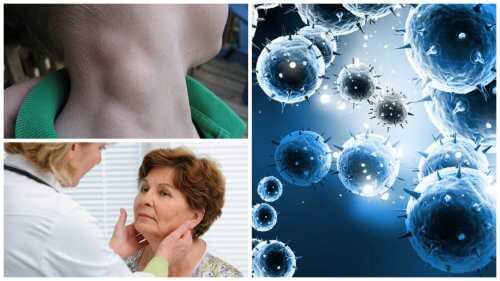Lymphoma is Treatable if Detected Early


Written and verified by the doctor Nelton Abdon Ramos Rojas
Fortunately, lymphoma is a type of cancer that can be treated successfully if detected in time. But how is that possible? How was this achieved?
Below, we share the answers to these questions and we comment interesting facts about lymphoma. Are you ready to discover everything you need to know? Take note!
Learn more about lymphoma
Firstly, you should know that lymphoma is a type of cancer that develops in the white cells of the lymphatic system, which is part of the body’s defense mechanisms.
The lymphatic system is a complex structure composed of small channels, nodes, bone marrow, and organs. All of them are made up of lymphocytes.
Thus, patients with this disease can’t control the activity of lymphocytes. They begin to grow abnormally and disproportionately.
It mainly manifests itself in the form of tumor masses near the lymph nodes, such as the armpits, neck, and abdomen. Although, as with all cancers, its development is complex and aggressive, early detection is the main key for successful treatment.
Main types of lymphoma
According to the MSD Manual, there are two main types of lymphoma:
- Hodgkin’s lymphoma.
- Non-Hodgkin lymphoma (tend to be more common).
- Burkitt lymphoma.
- Mycosis fungoides.
The first, Hodgkin’s lymphoma, is characterized by the presence of cells called Reed-Sternberg cells. These cause the main symptom: inflammation of the lymph node.
The other, non-Hodgkin’s type, includes a large and diverse group of cancer of the cells of the immune system. This makes it more aggressive and difficult to treat. This cancer can spread with ease and cause the gradual appearance of cancer in other organs.

Their behavior, growth, and treatment vary from person to person depending on lymphatic and immune system function.
Although several factors mark its development, experts haven’t been able to determine exactly what causes this variety. However, studies are still being conducted to clarify these and other points.
The main symptoms of lymphoma
The symptoms of lymphoma may vary in each patient. Therefore, we can’t say that all patients experience symptoms with exactly the same intensity.
However, it’s been observed that the symptoms it causes in most cases are:
- Enlarged lymph nodes in the neck, underarm, or groin.
- Pain in the abdomen, chest, and bones.
- Excessive and unexplained weight loss.
- Decreased or lost appetite.
- Constantly feeling full.
- The sudden appearance of lumps.
- Continuous fevers.
- Swelling of the abdomen.
- Difficulty breathing.
- Night sweats.
- Itching.
- Chills.
- Weakness.
- Fatigue.
- Coughing.
Risk factors
- Immune system deficiencies, including a history of transplantation, patients with HIV, or autoimmune diseases.
- Infection: a history of HIV, the Epstein-Barr virus, or Helicobacter pylori, among others.
- Chemical exposure. Being or having been exposed to chemicals such as herbicides and insecticides.
- Exposure to radiation.
- Being over 60 years of age.
- Being white-skinned.
Discover: Cancerous Cells: All You Need to Know
Early detection is key
The experts at the National Institute of Cancer indicate that Hodgkin’s Lymphoma is often curable. The outlook for non-Hodgkin lymphoma, on the other hand, depends on the specific type.
First of all, aggressive lymphoma sub-type is the most common. However, it’s proven that early diagnosis considerably increases the chances of successful treatment. The less aggressive subtype can allow patients to live up to 15 years with the disease.
After detecting lymphoma, doctors start immediate and intensive treatment. The standard treatment of the disease in its more aggressive state consists of courses of chemotherapy and biological therapy.
Treatment of Non-Hodgkin lymphoma consists of radiation therapy, chemotherapy, monoclonal antibodies, or some combination of the three.
Also, to treat lymphoma, radiation therapy may be effective for patients in stages I and II. This depends on the activity of the malignant cells.
There are several ongoing investigations, the main goal of which to improve existing treatment options. Therefore, it’s possible that, in the future, patients will be able to access treatments that can provide them with greater benefits.
All cited sources were thoroughly reviewed by our team to ensure their quality, reliability, currency, and validity. The bibliography of this article was considered reliable and of academic or scientific accuracy.
- Lo que usted necesita saber sobre el linfoma de Hodgkin. National Cancer Institute. [Document avaiable online].
- Linfoma no Hodgkin. American Cancer Society. [Document avaiable online].
- Tipos de linfoma no Hodgkin. Asociación Española Contra el Cáncer.
This text is provided for informational purposes only and does not replace consultation with a professional. If in doubt, consult your specialist.








